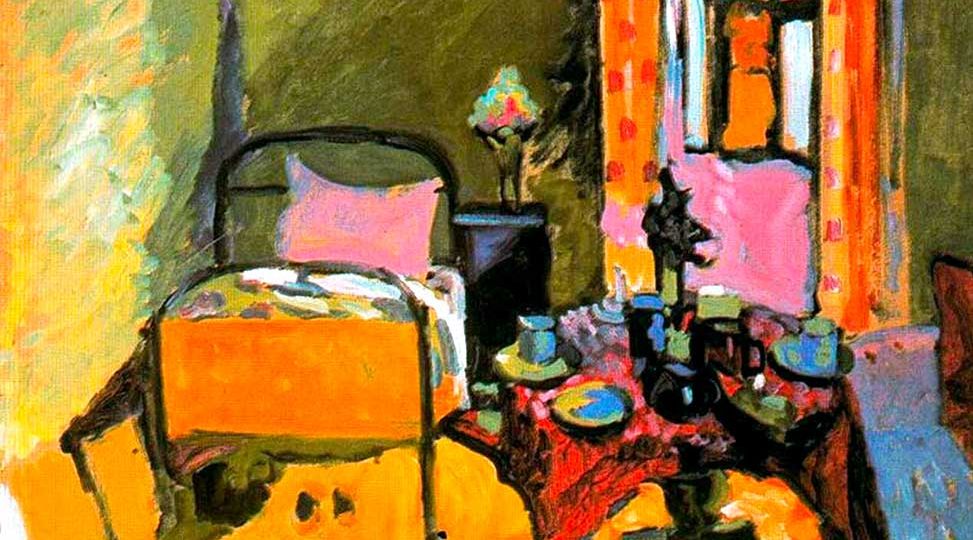
Death and Dying in Taiwan
A Conflict of Cultures
Hong-Wen Chen, July 1, 2015
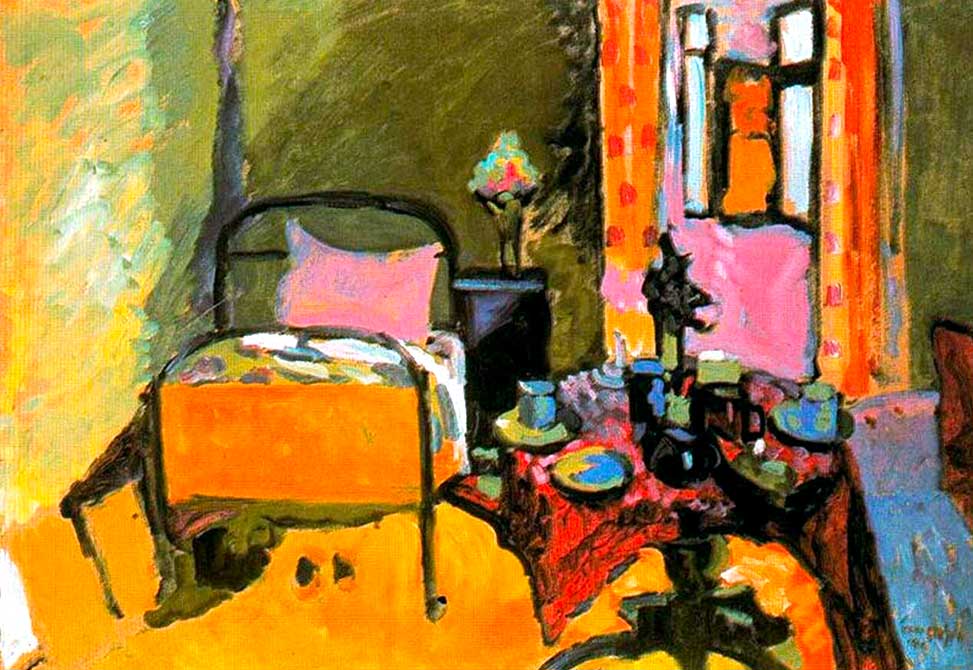
The core promoters of hospice care in Taiwan soon recognized that there was strong resistance from the referring physicians, especially those involved in the field of oncology. These doctors tended to regard hospice care as a sign of giving up on treatment of the patient, or worse, as a kind of euthanasia, a way for the physician to assist in suicide. The well-trained extraverted thinking (Te) function of oncologists always drove hospice care conferences into logical debates wherein the physicians engaged in arguments over such points as: “How could we know whether the life expectancy of a patient is less than six months?” This particular sticking point relates to the (Te) criteria set by U. S. medical doctors, as well as the guidelines represented in the definition of eligibility for hospice care set by the World Health Organization.
This problem was exacerbated by a cultural conflict with the Taiwanese public. Isabel Myers (1995) found that in normal type development, we balance our use of perception with judgment, and vice versa. Which one is dominant in the typology of Taiwanese people? When terminally ill patients in Taiwan wish to die at home instead of at the hospital, their family or relatives tend to make the decisions. And rather than depending mainly on the patient’s own will in this decision-making (“judging”) process, the focus is rather on how the neighborhood and community will evaluate the decision. According to Jung’s definition, this style of decision-making implies use of the Feeling function. Feeling “assigns a value to the thing that we have perceived and named” (Beebe, 2006, p. 132). In Taiwan, such decisions and actions taken by the families are determined mainly “not by subjective views but by objective conditions” (Jung, 1921/1971, para. 563), i.e., based on the opinions of their neighborhood. This orientation to the values of the society indicates that the attitude represented here is extraverted, thus pointing to extraverted feeling (Fe) as the prevailing judging function of Taiwanese culture.
In addition, in making decisions for care of a dying relative, the Taiwanese family always “senses” their neighborhood’s opinions by “a visual cue” (Beebe, 2006, p. 135). This “typical” or “traditional” evaluating process echoes vividly Emma Jung’s words in a paper in which she described introverted sensation (Si), her own dominant function: “When somebody comes into the room, such a type notices the way the person comes in, the hair, the expression on the face, the clothes, and the way the person walks. … Every detail is absorbed” (as cited in Sharp, 1987, p. 79). In other words, they read and interpret others’ state of mind not from the words spoken but from visual cues. For example, when families are having conversations with neighbors about the patient’s current physical condition, certain facial expressions would be interpreted by them as negative opinions or reservations on having a dying patient lodged at home. Within this process, the movement of the whole psychic atmosphere of the families seems “guided by the intensity of the subjective sensation excited by the objective stimulus” (Jung, 1921/1971, para. 650), which, according to Jung, is characteristic of introverted sensation.
Analyzing the above specific phenomenon in Taiwan, both Fe and Si seem to play key roles in the Taiwanese cultural psyche, just as Jung seems to imply in Psychological Types that both the extraverted and introverted processes live in us. To read the typology of a group of people and identify which of the attitude-types predominate, it is useful to ask the question suggested by Marie-Louise von Franz: “What do I habitually do most?” (1971/2013, p. 16).
In my English class in New York City, where I have 28 immigrant classmates from nearly 20 different countries, I noticed that Taiwanese people have a rather unique way of greeting others. No matter who they meet in the streets, no matter whether they are familiar to them or not, the first sentence Taiwanese people use to greet others in the Taiwanese language is: “Have you (has your stomach) been satisfied?” By contrast, Chinese speakers would say, “Good morning” or “Good evening” while Americans would say in English, “How are you?” Compared to the traditional greeting words used in other countries, the Taiwanese traditional greeting represents concern for bodily needs—the hungry or satisfied state of one’s stomach and the sensation of hunger. This clearly represents an introverted kind of sensation focus, just as described by Jung (1921/1971):
Introverted sensation apprehends the background of the physical world rather than its surface. The decisive thing is not the reality of the object, but the reality of the subjective factor, of the primordial images which, in their totality, constitute a psychic mirror-world. (para. 649)
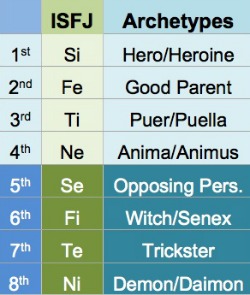
Reviewing Taiwanese history, we see that it is a history full of “defending” and avoidance of “offending.” In addition, the Taiwanese language is an oral form without a written form. Thus the Taiwanese greeting pattern, which has been transferred down through many generations, has become deeply embedded in the Taiwanese culture. Both the history and the culture of the Taiwanese psyche clearly reflect the introverted attitude. Therefore, I conclude that the cultural typology of the Taiwanese people is ISFJ (dominant introverted sensing with auxiliary extraverted feeling).
The Cultural Complexes Revealed by Typology
The early reaction from the Taiwanese public to the hospice care movement related directly to the ISFJ cultural typology. The public perceived hospice care as only for dying cancer patients—for people who were at the final stop in the journey of their lives. Ironically, the first hospice ward in Taiwan was located next to the mortuary of the hospital. This activated the inferior extraverted intuition (Ne) of Taiwanese typology, which is “more inclined to have dark prophetic fantasies of what might happen in the outside world—to their family or mankind,” (Sharp, 1987, p. 82), thus raising an additional challenge for the patients who had the desire to be admitted to the hospice ward. Even in such a challenging situation, the positive, appreciative responses from the patients who received hospice care, as well as from their families, not only encouraged the participants of the hospice care movement but also touched the hearts and minds of the physicians who had referred these patients.
Accordingly, the main focus in promoting the hospice care movement in Taiwan shifted from the education of medical doctors to the education of the ISFJ general public. The first advertisement videos on TV of hospice care featured a picture of a hand fastened by a clip, which symbolized the physical pain that patients with terminal cancer diseases suffered. Following that, three popular actors, who were around the age of 65, stood at the bus stop of “Hospice Care” with their luggage. They told the viewer that hospice care is to take away the clip to relieve the physical symptoms and that the stop of hospice care is one of the many stops one visits during the journey of life. In the 1990s, this advertisement was shown on all the five available TV channels in Taiwan. Viewing this advertisement from the perspective of an ISFJ typology, the first image echoed the dominant Si function of the culture. The three popular actors in the second part, represented the auxiliary Fe function. Thus, a subtle bridge was created between the Si focus on physical suffering, and the introverted thinking (Ti) tertiary function, which grasped the philosophical logic underpinning hospice care (Beebe, 2005, p. 43).
As might be expected of the dominant Si type, the Taiwanese population had to experience hospice care before forming a judgment. Having learned from the gratitude of the patients and families who had gone through the program in its early years, the Board of Directors of the Mackay Memorial Hospital decided to build a new modern building, which would be the biggest and the most humane hospice ward in the world. Today, it offers 64 beds, on a par with the St. Christopher hospice in London. The hospital Board of Director’s decision to build the best and the biggest hospice care center in the world obviously reflected the ISFJ auxiliary extraverted feeling, playing the role of the Parentarchetype.
The story of initial resistance and eventual acceptance of hospice care by the collective Taiwanese psyche hints at the existence of an additional issue, a complex related to death. In Taiwanese, the pronunciation of the word “death” sounds similar to the pronunciation of the number “four.” Therefore, in Taiwanese hospitals, the fourth floor is always used for conference rooms, offices, or laboratories, since Taiwanese patients would relate the place of number four to the place of death. Further applying such concerns about dark prophetic fantasies, all rooms in the new hospice ward were given names of various birds and trees instead of numbers. All the life-sustaining machines are hidden behind beautiful art paintings. The whole building is surrounded by a Western-style garden on one side and a Japanese Zen garden on the other side. All the rooms on the first floor are open to at least one garden and all the patient’s beds can be moved to the garden easily through a sliding glass door. All these designs implied that the hospice ward could be experienced as a refreshing hotel or as a comfortable home instead of being just a hospital ward or a terminal stop.
Even with the above special considerations in design, the hospice care team still faced questions like, “Could you find a bed for me that never had a patient die on it?” Here, we see the intuition of the introverted sensation type concerned with “events that go on in the background” (von Franz, 1971/2013, p. 35). Even these wonderfully designed beds seemed to be “distorted by [the] extraverted shadow who throws doubts on it” (p. 26). In the redesign of the beds to overcome the inferior extraverted intuitive (Ne) concerns, we see a demonstration of how the superior function, the dominant introverted sensation of the Taiwanese psyche, “tries to get hold of the inferior function and bring it over into its own realm” again and again (p. 17). At the same time, the issue also implies that all the special designs in the modern hospice ward could be “the pseudo-adaptation” by the Taiwanese psyche to “cover up their genuine inferior side” (p. 26). The creation of a policy that every hospice ward in Taiwan, no matter how big or small, would have an aquarium filled with fish, appears also to reflect this pseudo-adaptation to the inferior function.
The elaborate designs to conceal the fact of death reveal vividly how “the inferior function is the ever-bleeding wound of the conscious personality” (von Franz, 1971/2013, p. 68). Facing death is an event that challenges how the various functions in the psyche work together in everyone—cooperating, compensating, decompensating, or even in integrating with each other. Since most people in their conscious lives are more familiar with the adaptations of life, not of death, facing death often forces us to face our inferior function. “One should never jump directly to the inferior function,” said von Franz. But, “of course life does it; life does not care!” (p. 24). Indeed, the psyche of the terminally-ill patients (and that of their relatives) experiences the devouring effects of the inferior function, which is the barbaric, the least adaptive conscious function. Moreover, it is the area of “special vulnerability to possession by the figures of the collective unconscious” (von Franz, 1971, as cited in Sandner & Beebe, 1995, p. 327). The figures of the collective unconscious may be found in the hallucinations that the pre-dying patients commonly experience, just like the images that C. G. Jung experienced during his near-death experience in 1944. They also could be the dark fantasy images that are specific to the cultural unconscious of the Taiwanese people, triggered when they see the “brilliantly new beds” in the hospice ward. These people actually do at that time appear to acquire “a certain inner balance” (von Franz, 1971/2013, p. 67)—a “higher level of integrity” (Beebe, 1992, p. 102).
Paradoxically, the force to achieve the inner balance or higher integrity always comes through the inferior function. To Marie-Louise von Franz, the inferior function is the door through which “the unconscious can always come in” to the realm of the consciousness, could thus “enlarge consciousness and bring forth a new attitude” (1971/2013, p. 68). She had pointed out a process that tends to be “a serpentine movement” in which the unconscious could bring up the inferior function (p. 24). Von Franz used the term “middle realm” accompanied by a three-dimensional image to describe the psychic development in the process of assimilating the inferior function (p. 73). John Beebe elaborated on von Franz’s “serpentine” route as involving the cooperation of the dominant function with the auxiliary function, the Puer Aeternus function (the third position), and the Trickster function (the seventh position) (Beebe, 2015).
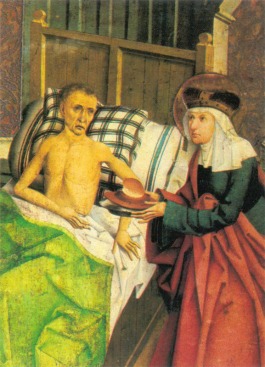
Another specific way in which the hospice care movement in Taiwan has dealt with the dark fantasies related to hospice care lies in the fact that the care provided in the hospice ward is an active palliative care. As distinct from the hospice care in the British or in the U.S. systems, where only the basic supporting medications are “allowed” to be given to the patients, Taiwanese hospice wards offer any possible and available palliative treatments in order to improve the quality of patient’s life, including palliative surgery, radiotherapy, and chemotherapy. It was not until the World Health Organization added the word “active” to the definition of hospice palliative care that Western countries could consider including such treatments in their care. In contrast to a curative treatment, “palliative” treatments aim at eliminating the suffering caused by terminal illness and thus need to be carefully evaluated with the consideration of the cost and benefit ratio related to the treatments that will be given to the terminally ill. Further, the goal of a curative treatment focuses primarily on the quantity of life, while the aim of a palliative treatment is the betterment of quality of life. In contrast with the dictates of standardized modes of curative treatments, palliative treatments must be tailored to the individual patient’s general condition, which should include the psychical, psycho-social, and spiritual aspects. Therefore, the decision-making of a palliative treatment requires the close cooperation between the patients and their medical teams. The more clearly the patients know themselves—their will, hope, and their current conditions—the more appropriate the goals and methods of the palliative treatments can be and disputed points resolved.
This decision-making process regarding palliative treatment in hospice care involves the participation of both the Te function, the voices of the physicians and medical staff, and the Ti function, the voices of the patient’s self-understanding and self-awareness. As a result of the extraverted thinking focus, physicians may feel compelled to include such factually accurate statements as: “If you chose hospice palliative treatment instead of curative treatment, it would bring you to death sooner.” But extraverted thinking (Te) occupies the seventh position for the ISFJ public in Taiwan, which according to Beebe, is carried by the archetype of the Trickster. Thus, such statements may make the public feel tricked and could effectively activate its inferior function (Ne) and its shadow function (Ni), and with it the dangerous “demonic personality” (Sandner & Beebe, 1995, p. 328).
By contrast, if the medical doctors can recognize the destructiveness of their ruthless language, and can be aware of the fears they share with their patients, the discussions of the palliative treatment would become more constructive. This is why the communication training programs in hospice care in Taiwan for medical teams encourage experiencing the unspoken fear of patients about death, as well the fear of the doctors themselves, the feeling of failure when death occurs. Through hospice care, the general public is educated to verbalize their needs and desires in front of their doctors; and the doctors are encouraged to discuss their worries and hopes as well.
One of the main visions of the founders of hospice care movement was to have hospice care available to all Taiwanese people who choose it, especially those who live in rural areas and those who prefer to die at home. Now, all progressive and advanced diseases are included in Taiwan hospice care, and the costs are mostly covered by the national health insurance. Four years ago, the Taiwan government started to also fund the education and communication skills training of medical participants, mainly doctors, in the service of disseminating information about this field. Gradually, more and more medical doctors have accepted the training and services of hospice care. General practitioners (GPs) have now replaced radiation oncologists as the main promoters of the hospice movement in Taiwan. Hospice care is now within reach for those all who want it, and it can be practiced at home. In contrast with the dominant extraverted thinking in the psyche of the oncologists, the function type of Taiwanese GPs, especially those who devote themselves to the hospice care, is more akin to introverted feeling (Fi). The new Fi leadership of the Taiwanese hospice care movement now reflects von Franz’s description:
Just as an introvert, if he wakes up to his inferior extraversion can spread a glow of life and make life in his surroundings into a symbolic festival, better than any extravert! He can give outer life a depth of symbolic meaning and a feeling of life as a magic feast which the extravert cannot. (1971/2013, p. 26)
The Making of the Hero

According to a Chinese proverb, “Time makes heroes, while heroes shape the times.” The Taiwanese Hospice Movement travels on the eternal road of typology with lonesome travelers as its collective heroic vanguard.
References
Beebe, J. (1992). Integrity in depth. College Station, TX: Texas A & M University Press.
Beebe, J. (2004). Understanding consciousness through the theory of psychological types. In J. Cambray, and L. Carter (Eds.), Analytical psychology: Contemporary perspectives in Jungian analysis (pp. 83-115). Hove, UK: Brunner-Routledge.
Beebe, J. (2005). Evolving the eight-function model. Psychological Type Bulletin, Winter, 2005, 34-39. (Reprint 2006, Australian Psychological Type Review 8 (1), 39-43.)
Beebe, J. (2006). Psychological types. In R. Papadopoulos (Ed.), The handbook of Jungian psychology: Theory, practice, and applications (pp. 130-141). London, UK: Routledge.
Beebe, J. (2015, February 15). Psychological types. Seminar presented at Pacifica Graduate Institute, Santa Barbara, CA.
Jung, C. G. (1921/1971). General description of the types (R.F.C. Hull, Trans.). In H. Read et al. (Series Eds.), The collected works of C.G. Jung (Vol. 6, pp. 330-407). Princeton, NJ: Princeton University Press. (Original work published in 1921.)
Myers, I. B. with Myers, P. B. (1995). Gifts differing: Understanding personality type. Mountain View, CA: CPP. (Original work published in 1980.)
Nakazawa, T. & Takita, Y. (2008). Departures. Japan: Tokyo Broadcasting System Pictures.
Sandner, D. & Beebe, J. (1995). The role of psychological type in possession from Psychopathology and analysis. In M. Stein (Ed.), Jungian analysis, (2nd. ed., pp. 322-330). Chicago, IL: Open Court.
Sharp, D. (1987). Personality types: Jung’s model of typology. Toronto, CA: Inner City Books.
von Franz, M.-L. (1971/2013). The inferior function. In Hillman, J. & von Franz, M-L., Lectures on Jung’s typology. Dallas, TX: Spring Publications.
Images
Wassily Kandinsky, “Bedroom in Aintmillerstrasse,” 1909. Courtesy: Städtische Galerie, München, Germany.
Bohemian Master, “St. Agnes of Bohemia Tending the Sick,” 1482.
Edda Sörensen, “Lotus” (“Lotus”), 2000.



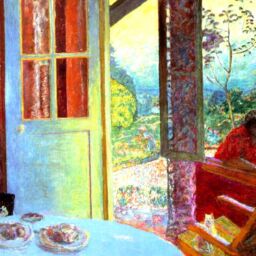


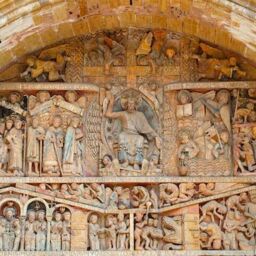
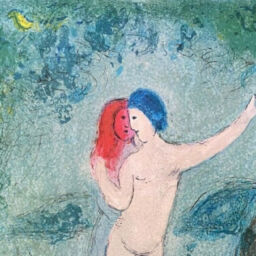
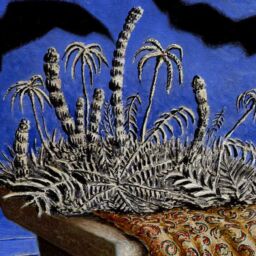
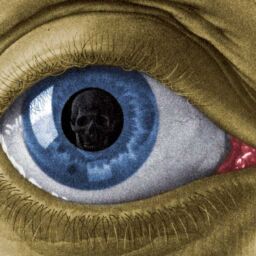




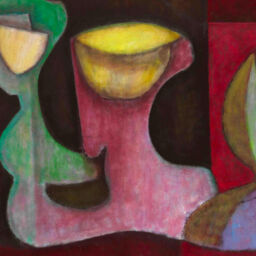


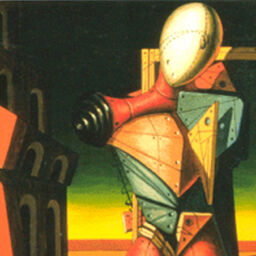
Just wanna say hello from Hualien, Taiwan!
Thank you 🙂
Thanks for an interesting and useful article. I have a long standing interest in the relationship between type and death/dying attitudes. I suspect that type is a very important “lens” through which to understand differences in how people deal with their own mortality and that of loved ones. Your take on how culture interacts with this is quite interesting. Thanks again.